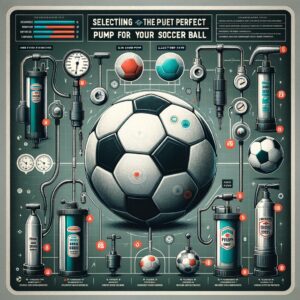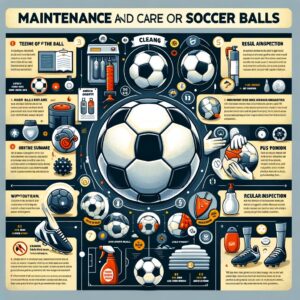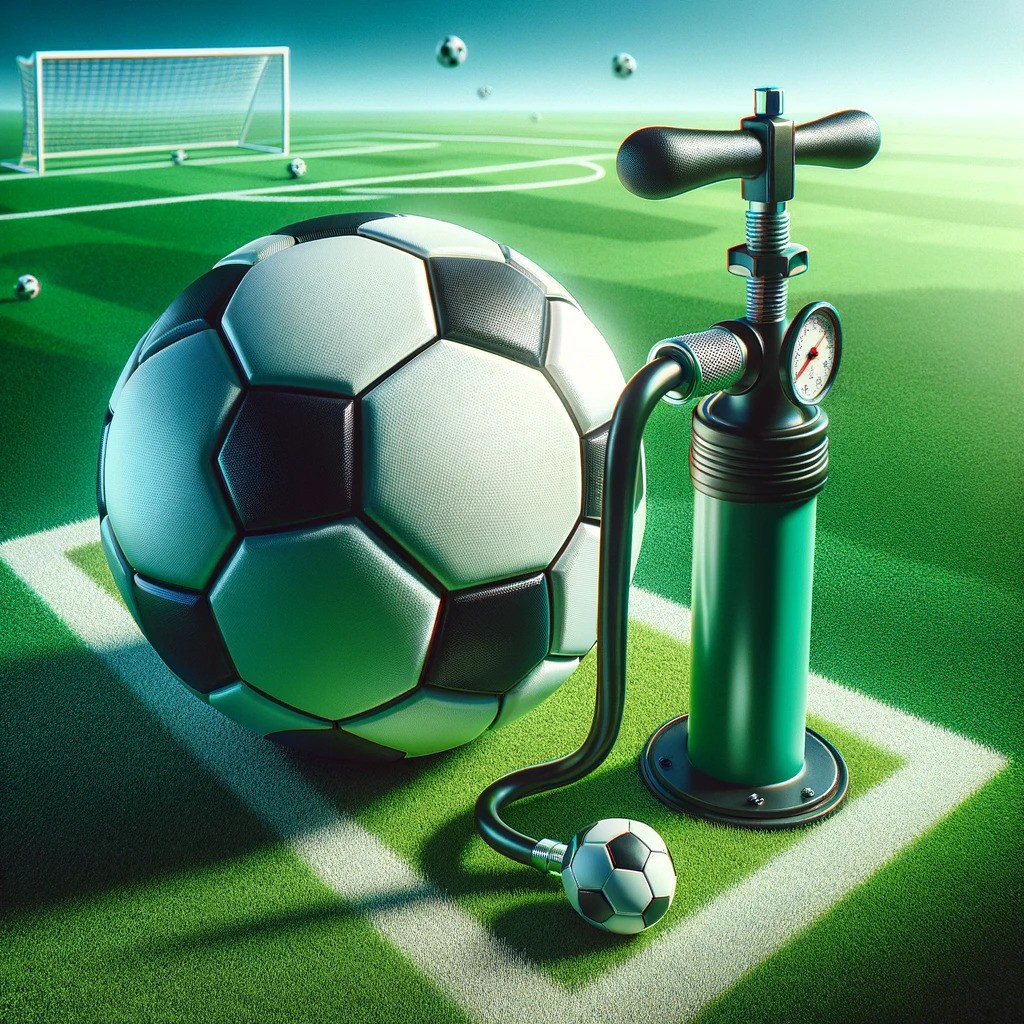Taking up on the journey of playing soccer, one quickly realizes the importance of having quality equipment. Central to this are two key items: the soccer ball itself and the pump used to inflate it. These aren’t just mere accessories; they are the heart and soul of the game. The ball’s quality can make a significant difference in how it moves and feels during play, while the right pump ensures that the ball is always at its optimal performance level.
In the world of soccer, both beginners and seasoned players must understand the nuances of these essential items. A well-chosen ball can enhance skills, improve game play, and increase the enjoyment of the sport. Similarly, a reliable pump is a necessary companion, ensuring that the ball is always ready for action. This section aims to shed light on the vital role these items play in the beautiful game of soccer.
Choosing the Right Soccer Ball
When it comes to choosing a soccer ball, there’s more to consider than just picking any ball off the shelf. The right choice can elevate your game, while the wrong one can hinder your performance. Here are the key factors to consider:
- Types of Soccer Balls: Soccer balls come in various types, each designed for specific uses and environments. For instance, training balls are typically more durable and designed for regular use, while match balls are constructed for professional play and offer better control and feel. Understanding the differences between training, match, and recreational balls is crucial in making the right choice.
- Factors to Consider:
- Size: Soccer balls come in different sizes, ranging from size 3 to 5. Size 3 balls are for young children, size 4 for pre-teens, and size 5 is the standard size used in professional leagues and by players aged 12 and older.
- Material: The material of a soccer ball affects its durability, touch, and performance. Traditional leather balls offer a classic feel, while synthetic materials are more durable and water-resistant.
- Weight: The weight of the ball impacts how it moves through the air and on the ground. A standard soccer ball should weigh between 410 to 450 grams.
The right soccer ball can be a player’s best ally on the field. It’s not just about the brand or the look; it’s about how well it suits your playing style and the conditions you play in.
The Role of Air Pressure in Soccer Balls
Understanding the air pressure in a soccer ball is crucial for optimal performance. The pressure affects how the ball moves and feels during play.
- Optimal Air Pressure: The ideal air pressure for a standard size 5 soccer ball ranges between 0.6 and 1.1 bars (8.7 to 15.9 psi). This range ensures the ball is neither too hard nor too soft, providing the right balance of bounce and control. It’s essential to check the ball’s pressure regularly, as both under- and over-inflation can affect performance.
- Effects on Performance: Air pressure directly impacts how the ball behaves on the field. A well-inflated ball will have a consistent bounce and is easier to control, whereas an under-inflated ball may wobble and be unpredictable. Conversely, an over-inflated ball can be too bouncy and hard, making it challenging to control and potentially causing injury.
Selecting the Perfect Pump for Your Soccer Ball

Choosing the right pump for your soccer ball is as important as picking the ball itself. A good pump ensures your ball is always at the optimal pressure for play. Here’s a detailed guide to help you select the perfect pump:
Understanding Pump Types
Manual Pumps: These are the most common and affordable types. They come in various forms, like hand pumps and foot pumps. Hand pumps are compact and portable, ideal for players on the go. Foot pumps, while slightly bulkier, offer more ease of use as they require less physical effort.
Electric Pumps: Electric pumps are faster and require minimal effort. They are ideal for coaches or players who frequently inflate multiple balls. Some electric pumps can automatically stop when the ball reaches the desired pressure, ensuring consistency.
Key Features to Look For
Pressure Gauge: This is essential for getting the right pressure in your ball. A built-in gauge helps you accurately measure the air pressure while inflating.
Durability: Look for a pump made of sturdy materials. A durable pump will last longer and can withstand regular use.
Ease of Use: The pump should be easy to operate. Manual pumps should have a comfortable grip, while electric pumps should be simple to set up and use.
Portability: If you’re always on the move, a compact and lightweight pump is essential.
Needle Storage: Some pumps come with a space to store the needle. This is a handy feature as it helps prevent needle loss.
Consider the Pump’s Compatibility
Ensure the pump needle fits the valve of your soccer ball. Some pumps come with multiple needle sizes, which is a plus.
Budget and Quality Balance
While budget is a consideration, don’t compromise on quality. A slightly more expensive pump can be a worthwhile investment if it offers durability and accurate pressure measurement.
Read Reviews and Seek Recommendations
Look at customer reviews to understand the pump’s performance in real-world conditions. Recommendations from fellow players or coaches can also guide you in making a suitable choice.
Testing the Pump
If possible, test the pump before purchasing. This gives you a feel for its ease of use and efficiency.
Additional Accessories
Some pumps come with extra needles or maintenance kits, which can be a bonus.
How to Properly Inflate a Soccer Ball
Inflating a soccer ball correctly is crucial not only for the longevity of the ball but also for the quality of play. Here’s a more detailed look at how to do it right:
- Gather Necessary Tools: You’ll need a pump (either manual or electric), a needle that fits your pump, and possibly some lubricant (like glycerin or saliva).
- Locate the Valve: The valve is the small, rubber hole on the ball where air is pumped in. It’s usually marked and located opposite the ball’s branding.
- Prepare the Needle: Before inserting the needle into the valve, it’s advisable to lubricate it slightly. This reduces the risk of damaging the valve. You can use a bit of glycerin or even saliva.
- Insert the Needle Carefully: Gently insert the lubricated needle into the valve. Be cautious not to force or angle the needle, as this can damage the valve or the bladder of the ball.
- Check the Recommended Pressure: Soccer balls have a recommended pressure, usually printed near the valve, often in both psi and bar. For most size 5 balls, it’s around 0.6 to 1.1 bars (8.7 to 15.9 psi).
- Start Inflating the Ball: Inflate the ball slowly, keeping an eye on the pressure gauge if your pump has one. If you don’t have a gauge, periodically stop and check the ball’s firmness by pressing on it with your fingers. The ball should be firm but with a slight give.
- Check the Ball’s Pressure: If you have a pressure gauge, use it to ensure the ball is inflated to the recommended level. If not, use the drop test: drop the ball from shoulder height; it should bounce back up to your waist or higher.
- Stop and Remove the Needle: Once the ball reaches the desired pressure, stop pumping and carefully remove the needle. Avoid jerking or pulling the needle out quickly as it can damage the valve.
- Give It a Final Check: Give the ball a few bounces and a kick or two to make sure it feels right. Adjust the pressure if necessary.
- Regular Maintenance: Regularly check and adjust the air pressure in your ball. A properly inflated ball ensures the best playing experience and extends the life of the ball.
Maintenance and Care for Soccer Balls

Proper maintenance of a soccer ball is essential to extend its lifespan and maintain optimal performance. A well-cared-for ball not only plays better but also lasts longer, saving money and resources over time.
-
Regular Cleaning Tips:
- Surface Cleaning: After every game or practice, wipe the ball with a damp cloth to remove dirt and grime. Avoid using harsh chemicals or abrasive brushes that can damage the ball’s surface.
- Drying: Always air dry the ball away from direct sunlight and heat sources. Excessive heat can warp the ball and affect its shape and performance.
- Checking for Damage: Regularly inspect the ball for signs of wear, such as cracks, stitching coming loose, or loss of shape. Early detection of damage can prevent further deterioration.
-
Storage Recommendations:
- Proper Inflation: Store the ball with a slight amount of air to maintain its shape. Avoid leaving it fully inflated, as this can stress the seams over time.
- Temperature-Controlled Environment: Store in a cool, dry place to prevent material degradation. Extreme temperatures and humidity can adversely affect the ball’s material and air pressure.
- Avoid Compression: Don’t place heavy objects on top of the ball, as this can deform its shape. Store it in a way that keeps its spherical shape intact.
Conclusion
Wrapping up our comprehensive guide, we’ve journeyed through the essentials of selecting and maintaining a soccer ball and pump. From understanding the types and materials of soccer balls to the intricacies of air pressure, the right pump selection, and the proper inflation technique, we’ve covered it all. The goal has been to equip you with knowledge that can transform your playing experience.
Frequently Asked Questions
How should a soccer ball be pumped?
To pump a soccer ball, insert a lubricated needle into the valve and inflate it slowly, checking the pressure with a gauge. The ideal pressure for a size 5 soccer ball is between 0.6 and 1.1 bars (8.7 to 15.9 psi). Stop inflating once the desired pressure is reached.
Can you pump a soccer ball without a pump?
It’s challenging to inflate a soccer ball without a pump. In emergencies, you can use a compressed air machine or a balloon to transfer air, but using a proper soccer ball pump is always recommended for the best results and to avoid damage to the ball.
How many pumps does it take to explode a soccer ball?
The number of pumps to explode a soccer ball varies based on the pump’s efficiency and the ball’s condition. Overinflating can cause the ball to burst, so it’s essential to follow the manufacturer’s recommended air pressure and use a pump with a pressure gauge.
How much are you supposed to pump a soccer ball?
A standard size 5 soccer ball should be inflated to an air pressure between 0.6 and 1.1 bars (8.7 to 15.9 psi). Always refer to the specific recommendations printed on the ball.
How do you know if a soccer ball is pumped up enough?
You can tell if a soccer ball is pumped up enough by using a pressure gauge. If you don’t have a gauge, use the drop test: drop the ball from shoulder height; it should bounce back up to your waist or higher. The ball should feel firm with a slight give when pressed.
How do you know when a soccer ball is fully pumped?
A soccer ball is fully pumped when it reaches its recommended pressure level, which can be checked with a pressure gauge. Alternatively, if it rebounds correctly from a drop test and feels firm and responsive to touch, it is likely at the right pressure.

